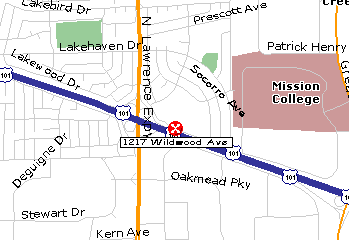|
|
|
 | ||
|
| ||
-->
 Wednesday, January 10, 2007
Wednesday, January 10, 2007
| $25 -- Register & prepay for dinner in one step from your PayPal account or Credit/Debit Card! |
Ramada Inn
PLEASE RESERVE IN ADVANCE --

The driving engine for these numbers has again been the successful penetration of display-based products and technologies into both the consumer and computer markets, as it was in 2004. The products with the strongest growth were liquid crystal display (LCD) TVs (79%) and camera phones/personal digital assistants (PDA) (41%). Within the components segment, much of the growth has been driven by solar cells (24%), display modules (20%), and sources and detectors (10%). The sources and detectors segment includes optoelectronics components with strong growth rates such as image sensors (26%), nondiode lasers (9%), and diode lasers (6%). All segments exhibited growth in 2005 except optical storage media, which declined (3%) due to strong competition.
Optoelectronics technology has demonstrated remarkable flexibility in influencing new applications. Examples from 2005 include:
In conclusion, the optoelectronics is quickly penetrating a number of products across many markets, with a trend toward convergence. Optoelectronics technologies are utilized in products that span communications, computing, and consumer/entertainment. A significant enabler driving convergence is the LCD flat panel display, which is today found not only in notebook personal computers (PC), but also in televisions, mobile cellular phones, PDAs, and desktop monitors. A number of specific types of applications that are particularly dependent upon optoelectronics have strong potential for market growth in 2006. These include the Internet and computing, cellular telephony, wireline telecommunications, and emerging applications such as games, healthcare, and sensors.

In 1985, Lebby’s research took him to AT&T Bell Laboratories, followed in 1989 by a move to Motorola's Phoenix Corporate Research Laboratory in Phoenix, Arizona. Early in 1997, he became an R&D Business Technology Development Manager where he managed all aspects of advanced technologies in corporate R&D.
In 1998, Lebby joined AMP as a member of the Global Optoelectronics Division's management team. At AMP he was responsible for growing the fiber optic datacom and telecom business through external interactions that included mergers, acquisitions strategic alliances, and technical strategic planning. During the summer of 1999, Lebby joined Intel as a corporate investor and was responsible for sourcing, negotiating, and closing private placement equity deals in the optical networking, component, and semiconductor arenas.
In 2001, Lebby founded a new fiber optics company, Ignis Optics, where he served as the CEO, President, and Board Member in addition to acting VP of Sales, Marketing and Business Director during the growth phases. Ignis Optics was acquired by Bookham Technology in October 2003 and Lebby became responsible for corporate and technical strategy at Bookham Technology.
Dr. Lebby joined OIDA as Executive Director in early 2005. He was elected an IEEE Fellow for contributions to optoelectronics technology.
|
SCV Chapter
Home Page |
How to Join IEEE |
Contact our Chapter Chair |
FF
| CPMT Society
Home Page |
IEEE Home Page |
Email
to Webmaster |
Last updated on